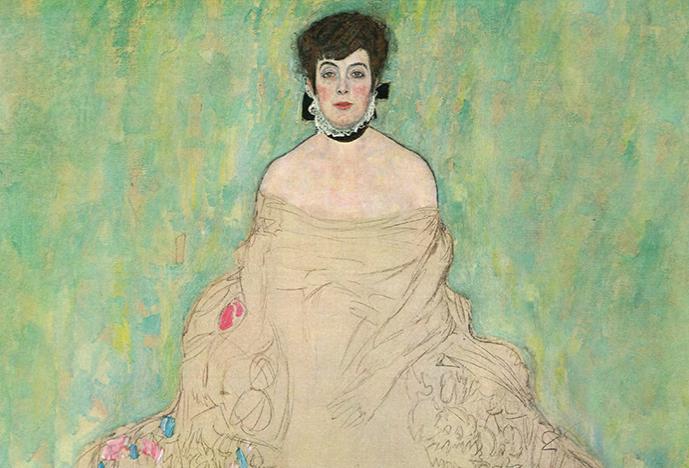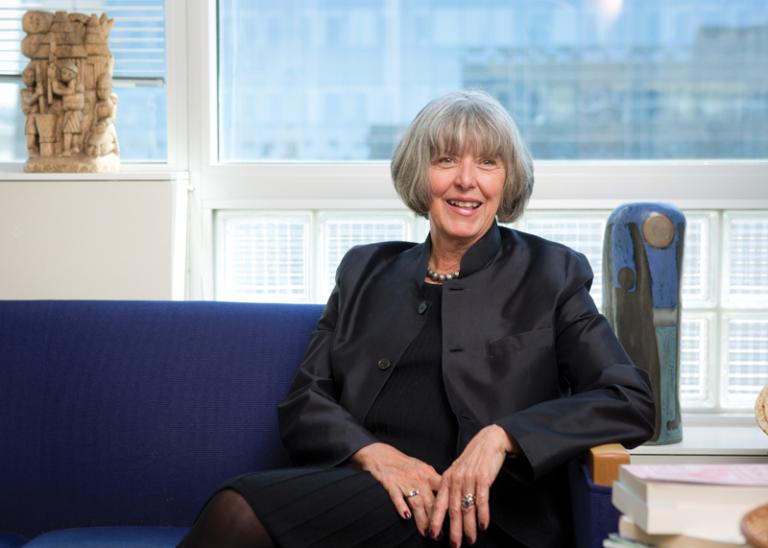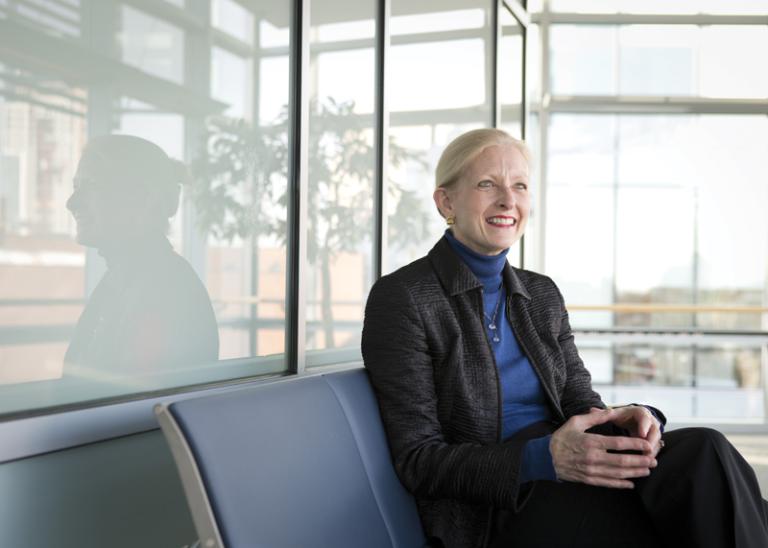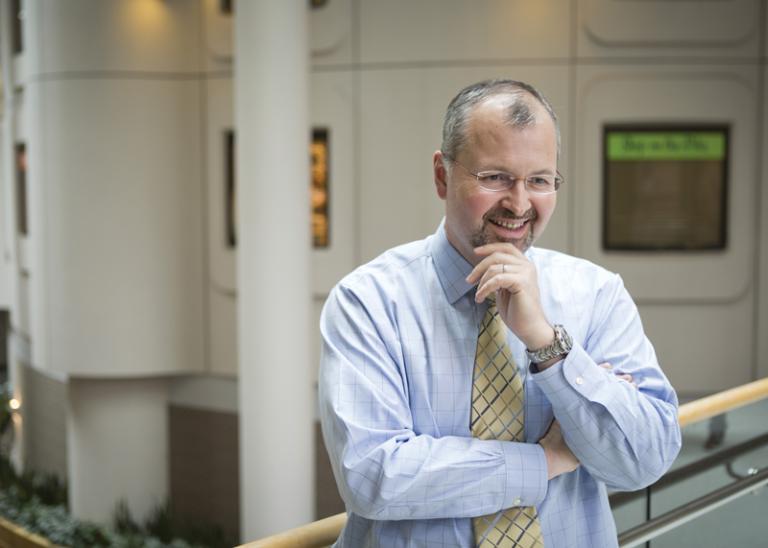Reflected Anew
Surgery leaves scars both seen and unseen
- 10 minute read
- Feature

Gustav Klimt Portrait of Amalie Zuckerkandl (unfinished) 1917 128 x 128 cm Oil on canvas
“It’s after the knives and the sutures and needles, I’m left with an arrow that points at my heart,” Carly Simon sang after being diagnosed with breast cancer in 1997 and undergoing mastectomy, breast reconstruction, and chemotherapy.
Simon’s lyrics ring true for Hester Hill Schnipper and many of the patients she sees as program manager of oncology social work at Beth Israel Deaconess Medical Center. Having lived through two rounds of breast cancer diagnosis and treatment herself, including mastectomy, Schnipper knows that in the physical and psychological wake of surgery, people may struggle with altered body image.
“Surgeons have gotten really good,” she says. “Scars are often smaller than they used to be or are hidden in natural skin creases so they’re almost invisible. But scars are only the obvious manifestation.”
On top of the trauma of any illness or injury that precipitates intervention, people may look and feel different after surgery. Parts of their bodies may not work as they did before. Even people who aren’t initially bothered by postoperative changes may contend with negative reactions from intimate partners or strangers. Recognizing that improved functional and cosmetic results can better preserve or restore a patient’s relationship with their body, some surgeons are driven to innovate.
“Of course you will be always and forever grateful to the surgeon who took your cancer out,” says Bohdan Pomahac, an HMS associate professor of surgery at Brigham and Women’s Hospital, who conducted the first full-face transplants in the United States. Besides that rush of gratitude, however, doctors and patients also must address “the ultimate questions, ‘How am I going to feel about my body?’ ‘What’s going to be my quality of life?’”
Barbara Smith ’83, an HMS associate professor of surgery at Massachusetts General Hospital, develops techniques in breast cancer surgery and reconstruction that are designed to help women feel more at ease with their bodies. “You can always do things better than you’re doing them right now,” she says. “You can always make things better for your patients.”
“As surgeons,” she adds, “we need to be discontent with what we know.”
Mirror’s Image
“When you look in the mirror, the woman looking back won’t be the ‘you’ you know and love,” Schnipper wrote in her 2003 patient-support book, After Breast Cancer. “She looks different, and everything about her body feels different.”

Studies across disciplines, procedure types, and body sites acknowledge the significant impact surgery can have on body image, especially in the early postoperative weeks. People can become depressed or anxious or develop post-traumatic stress disorder. Some can’t stand to look in a mirror or to be touched; others are distraught that they no longer fit into “normal” clothes. Schnipper remembers a woman who told her she had burst into tears when she couldn’t feel her husband’s hand on the numb skin of her reconstructed breast. Schnipper has counseled people with a new colostomy who fear they can no longer have sex or go on a date. Medical journals relate stories of patients who, after disfiguring head and neck surgery, refuse to eat or speak in public or to go outside at all.
“It’s not frivolous for someone to worry about remaining intact,” says Smith.
Researchers are still trying to gauge the prevalence of body image issues among various patient populations, standardize the measurement of such complications, and identify who is more likely to experience them.
“Many patients are well adjusted, and many are not; neither may correlate with the extent of the physical deformity,” says Pomahac, who is also director of plastic surgery transplantation at Brigham and Women’s and medical director of the hospital’s burn center.
Patients’ preoperative feelings about their bodies seem to play a role. A 2011 survey found that patients with a negative body image were more willing than those with a positive body image to accept greater surgical risk and higher cost in exchange for scarless techniques. Unrealistic patient expectations before surgery can also contribute to dissatisfaction afterward.
The personal significance of a change to a body part can depend on a number of factors: how visible the body part is, the value society places on it, and its importance to a person’s livelihood and identity. For instance, changes to sex-related organs, such as impotence after prostate surgery or menopause after a hysterectomy, can make people feel less masculine or feminine.
Major facial changes can make people less recognizable—and draw stares. Conversely, hand transplants can be more difficult for recipients themselves to get used to.
“Unlike your face, you see your hands all the time,” says Pomahac. “You may spend more time looking at them, trying to figure out how they used to look and how the new ones differ.”
Being able to choose surgery rather than having it thrust upon them can be empowering for patients at a time when they feel incredibly vulnerable, says Smith. Yet taking control doesn’t always protect against body image repercussions. As more women choose prophylactic mastectomy after surviving a first breast cancer or learning they have a genetic risk, social workers like Schnipper hear more expressions of regret. Some feel they overreacted in a time of crisis; others feel they weren’t fully informed of risks such as chronic pain.
Health care providers can’t predict patients’ responses, nor can patients predict their own. “It’s hard for most people to bring that kind of thing up,” says Schnipper, “so it would help if the surgeon would say it first. Acknowledge the patient’s fears and make those fears acceptable.”
Surgeons can also help their patients by looking for ways to improve the procedures they perform or by developing entirely new ones.
Details Make a Difference
“You’re not taking my nipples.”
It was 2007, and Smith’s patient, a woman in her late forties, had had a successful lumpectomy to remove her breast cancer. She still faced a risk of recurrence, however, so she wanted a double mastectomy. But on her own terms.
Breast cancer surgery had come a long way in the previous decades, but in the United States, no procedure yet existed to preserve the nipple. In the 1960s and 70s, surgeons’ attempts to keep the nipple alive involved leaving the underlying breast tissue intact, an approach many thought unacceptably increased the risk of cancer recurrence.

Like many of her patients, Smith wasn’t satisfied with the available options. “The original nipple is very complicated in color and texture and has all those little funny bumps and wrinkles,” she points out, none of which tattoos or skin grafts were able to replicate.
Smith decided to apply the scientific rigor learned during her doctoral work in microbiology and molecular genetics to her analysis of nipple microanatomy. In 2006, she assembled a team that collected the more than 300 nipples removed during mastectomies at Mass General that year and took ultrathin serial sections of a subset of them. Additional tests allowed her to “discover things about the nipple nobody knew before,” including the number and placement of the milk ducts and blood vessels. She then developed a technique to remove the potentially cancerous ducts while preserving about two-thirds of the blood supply, leaving “basically bare skin” on the underside of the nipple and areola.
The following year, Smith’s determined patient became the first at Mass General to undergo nipple-sparing mastectomy with reconstruction. Since then, Smith and colleagues at the hospital have performed more than 1,800 of the procedures. She is happy that the technique enables more women to wake up with a fully reconstructed breast and enjoy greater confidence in locker rooms and comfort with intimate partners.
Now she’s focused on convincing the medical establishment that the procedure is as safe as conventional reconstruction techniques.
“In medicine, you learn the skills your mentors have perfected. But there is no way that’s the best things can be,” she says. “You always have to look at what you do with a fresh eye, questioning the technique, taking a different perspective.”
The Way You Wear Your Hat
Pomahac spent years in the Brigham and Women’s burn care unit saving lives and trying to reconstruct disfigurements. But there were some things surgery couldn’t do, like rescue the face of 55-year-old Jim Maki, who in 2005 fell onto the third rail at a Boston subway station. Although Pomahac eventually managed to stabilize his patient, Maki lost his nose, cheeks, lips, upper teeth, and palate.

Living without a face puts drastic restrictions on people’s lives. In addition to becoming unrecognizable to their loved ones, Pomahac says. “They can’t breathe, can’t speak properly, can’t eat in public. Many of them have gone blind.”
Pomahac set out to develop a face transplantation protocol that could help Maki and others like him. He and a colleague flew to Belgium to prepare for the operation and discuss ideas with the team of surgeons that had conducted the world’s first face transplant. In 2009, he led the team that performed the hospital’s first partial face transplant—on James Maki—followed by three full-face transplants in 2011.
As a reconstructive surgeon, Pomahac is able to help patients who have already suffered severe trauma regain a look that approaches normal. Still, he “paints the picture pretty black” during preoperative consultations, emphasizing the uncertain return of sensory and motor function and the risks and limitations of lifelong immunosuppression. He believes this approach helps explain why candidates who go forward with transplantation accept their new faces with surprising ease.
Yet given how much human individuality is linked to facial features and expression, how is it that patients do not experience an identity crisis after surgery?
Facial transplant recipients don’t look the same as they did before their accidents—and they don’t look like their donors, either, since the skin and muscle are draped over different bone contours.
“You one day see a patient who looks completely different from the previous day, yet it’s remarkably easy to identify them,” says Pomahac. The underlying structures of the face are the same, as are the ears, and, sometimes, the hair. Often, patients search for a feature in the donor face—a hooked nose, a dimpled chin—that reminds them of what they used to look like. Then, says Pomahac, “there are all these clues, how they talk, how they think, their body language, and suddenly it all clicks in, and it’s like, yeah, it’s the same guy.”
Cutting Edge
Although they are mainly driven by patient needs, Pomahac and Smith also enjoy the novelty and challenge of devising new techniques.
“Most progress in surgery these days is made by new technology or medications,” says Pomahac. “There aren’t many opportunities to come up with a new operation. It’s kind of old-fashioned.”
Surgical innovation is one manifestation of Pomahac’s lifelong passion for solving problems. At age 15, he competed in the Czech Republic’s national men’s chess league, a game he set aside in favor of medical school.
“I think plastic surgery attracts people who are creative and who love the fact that every problem has five different solutions,” he says. “That’s what I get excited about. You’re constantly inventing things and constantly questioning.”
Smith, who was raised in a medical family in a small town, feels a deep-seated duty to help those around her. But it’s also fun, she says. “As you move along in your career, every time you get to figure out a whole new way of doing things, it’s really invigorating.”
Along with the pleasure of discovery is the hope that innovations will help patients move beyond survival and focus on enjoying the life that surgery has helped make possible.
It is, says Schnipper, the satisfaction that comes when a person can say, “This is who I am now.”
Stephanie Dutchen is a science writer in the HMS Office of Communications and External Relations.
Images (from top): Osterreichische Galerie Belvedere, Vienna; John Soares (portraits)